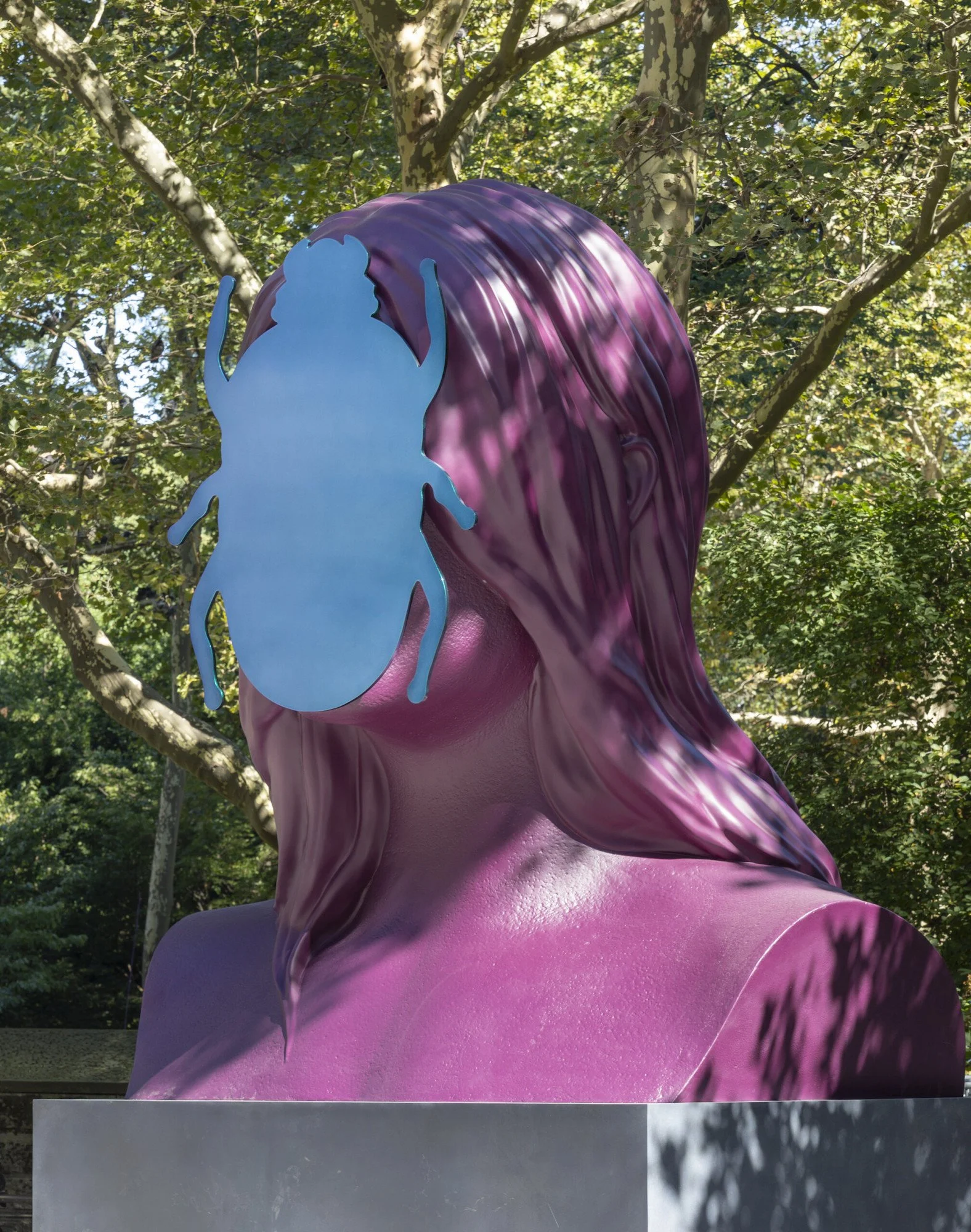Public Art Fund Curator Melanie Kress on Monira Al Qadiri “First Sun”
For her large-scale public commission, First Sun, artist Monira Al Qadiri has partnered with Public Art Fund in New York and the Lassonde Art Trail in Toronto to create a monumental new work bridging ancient mythologies and contemporary ecological urgencies. The sculpture, drawing from the Egyptian deity Khepri, the scarab-headed god of the rising sun, will stand at the threshold between city and park, situating itself at the crossroads of history, environment, and culture. Over a year in the making, the project reflects Al Qadiri’s long-standing fascination with how humans construct meaning through our relationships to other species, to deep time, and to the shifting landscapes we inhabit. In this conversation, Xuezhu Jenny Wang speaks with Public Art Fund’s Senior Curator Melanie Kress about the genesis of the project, its monumental scale, and the ways it invites audiences to rethink both the sacred and the ecological.
Xuezhu Jenny Wang: To begin, can you share an overview of how this project came about?
Melanie Kress: This is a partnership commission with Public Art Fund and the Lassonde Art Trail in Toronto. I’ve long admired Monira’s public art installations across different cities and cultural sites. And I’ve also been in touch for years with November Paynter, the curator at Lassonde. We were eager to join forces, pool resources, extend the exhibition timeline, and bring the work to broader audiences. Monira was an ideal choice, given her ability to respond to both Central Park and the Lassonde site, which are very different yet share resonances she could tap into.
XJW: Central Park and the Lassonde Art Trail are quite different sites. How does the artist bridge those contexts?
MK: Central Park is the first landscaped public park in the United States, designed to immerse visitors in what feels like wilderness, though it’s a fabricated landscape. The idea was relief from industrial New York—an escape into nature. Lassonde, by contrast, is a redeveloped industrial site in Toronto where they’ve literally moved a canal back into its original riverbed and rewilded the land. Monira is fascinated by these long arcs of history—the oil industry, fossil fuels as ancient animal remains, and the shifting ways humans relate to nature. Her work connects these chapters of human-environment interaction across time.
XJW: The sculpture references the ancient Egyptian deity Khepri. How did that interest emerge, and what does it mean to bring the motif to New York and Toronto?
MK: Monira became deeply interested in ancient Egypt a few years ago during the pandemic. She encountered depictions of Khepri, the god of the rising sun, with a scarab beetle face. Initially, she thought it looked like graffiti, but learning it was a deity fascinated her—this need to anthropomorphize revered animals and insects. In her work, she brings that history into dialogue with our current separation of humans from animals. She wants to remind us there are other ways of coexisting, and to reframe insects and animals as integral companions in our shared world. Many insects are essential pollinators or play ecological roles that we depend on. Even when we feel uneasy around them, they sustain human life. Her work reminds us to respect and revere creatures we might not fully understand.
XJW: The iridescent paint is striking. Could you expand on why the artist chose this?
MK: The figure is painted in a deep purple hue, and the scarab shimmers with iridescent paint that shifts as you move around it, which is inspired by real beetles. That paint contains crystals derived from recycled plastics. For Monira, iridescence connects to her family history in Kuwait, where the pearl-diving industry was supplanted by oil. She sees pearlescence as a “color of history,” shape-shifting across contexts and mirroring the mutable, elusive nature of different materials.
XJW: Does that pearlescence link to ideas of the alien or otherworldly?
MK: My interpretation is that she’s less focused on extraterrestrials than on the idea of “alienness” itself. Many species on Earth already feel alien to us because we can’t communicate or relate to them. Her work asks us to reconsider what counts as alien and how shifts in perception open new relationships.
XJW: Finally, is there anything you’d like people to keep in mind when encountering the sculpture?
MK: Monumental figuration has always been about power, authority, and legacy. This work challenges those traditions, proposing new perspectives on representation. It’s about our relationship with other species, but also about how we relate to each other and what we choose to monumentalize.
Not only does the piece resonate powerfully in today’s context, but it is also strong in that it transcends any single moment. It situates us within “deep time,” reminding us of both our urgency and our smallness in the larger sweep of history.
This interview has been edited for clarity and length.




